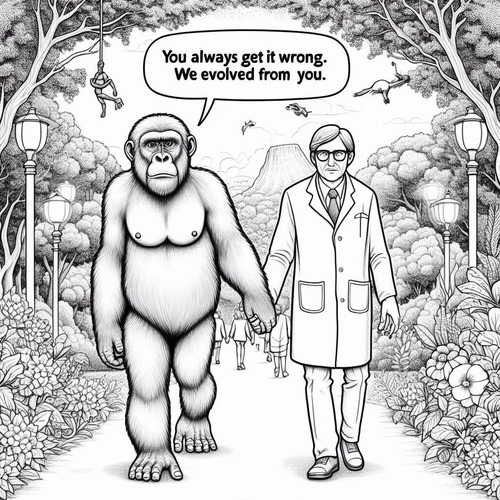The Ankle and Feet: A Miracle of Precision Engineering
The Ankle and Feet: A Miracle of Precision Engineering
Every step you take is a silent miracle of biological engineering that would make the most advanced robotics engineers marvel in awe. Hidden beneath our skin, the ankle and feet represent one of the most sophisticated mechanical systems in nature—a complex network of bones, ligaments, and neural pathways that transform human movement into an art form of precision and adaptability.
The ankle and feet aren’t just body parts. They’re a testament to an extraordinary level of design, a system so sophisticated that it challenges our understanding of biological complexity.
The Numbers Behind The Marvel
Imagine a mechanical system composed of 26 distinct bones in each foot, working in near-perfect harmony. That’s 52 bones total, interconnected with an intricate web of more than 30 joints and over 100 muscles, tendons, and ligaments. This isn’t just a random assemblage—it’s a masterpiece of biological design that allows us to walk, run, jump, balance, and navigate the most challenging terrains with remarkable ease.
A Shock Absorption System Beyond Compare
Consider the engineering marvel of how our feet absorb impact. With each step, your foot experiences forces up to three times your body weight. A complex arch system acts as a natural shock absorber, dissipating energy more efficiently than any human-made suspension system. The longitudinal and transverse arches work together like a sophisticated spring mechanism, storing and releasing energy with each stride.
Pressure Distribution: A Delicate Balance
Research from biomechanics laboratories has shown that during walking, your foot manages to distribute pressure across multiple points with microscopic precision. Your heel strikes first, then weight transfers through the arch, finally pushing off from the toes. This isn’t just movement—it’s a carefully choreographed dance of biomechanical engineering.
Adaptive Capabilities That Defy Simple Explanation
The ankle-foot complex doesn’t just move—it thinks. Proprioceptive sensors embedded throughout the system provide instantaneous feedback, allowing for split-second adjustments. Walking on uneven terrain? Your foot instantly recalibrates, engaging different muscle groups and adjusting joint angles to maintain balance and prevent injury.
A Range of Motion That Challenges Imagination: Try this experiment: Rotate your foot. Notice how smoothly it moves—rotating, flexing, extending—with a range of motion that would challenge even the most advanced robotic prosthetics. This isn’t just flexibility; it’s an intricate system of rotational and translational movements that allows for incredible adaptability.
BIOMIMETIC INSIGHTS: WHEN TECHNOLOGY TRIES TO CATCH UP
Modern robotics and prosthetic design continually attempt to replicate the ankle-foot complex—and continually fall short. Current technological limitations mean even our most advanced artificial limbs cannot match the natural system’s efficiency, adaptability, and seamless integration.
A 2022 study in the Journal of Biomechanics highlighted this gap, indicating artificial systems struggle to replicate the simultaneous shock absorption, energy transfer, and adaptive response of a natural human foot. It’s a humbling reminder of the extraordinary engineering occurring within our own bodies.
BEYOND SIMPLE MECHANICS: A SYSTEM OF EXTRAORDINARY COMPLEXITY
What makes the ankle-foot complex truly remarkable is its interdependence. Every component—from the smallest ligament to the largest bone—plays a crucial role. Remove or significantly alter any part, and the entire system fails. It’s a level of integrated design that suggests something more than random chance.
The Incredible Neural Network: Your feet contain approximately 200,000 nerve endings—more sensory receptors per square centimetre than almost any other part of your body. This neural network provides constant feedback, allowing for instantaneous adjustments in movement, balance, and pressure distribution.
CONCLUSION: REAL-WORLD PERFORMANCE—THE ULTIMATE TEST
Whether you’re a marathon runner navigating varied terrain, a dancer performing intricate movements, or simply walking across your living room, your ankle and feet are performing engineering feats that would challenge the most sophisticated human-designed systems.
Next time you take a step, pause for a moment. Consider the extraordinary system carrying you forward: a marvel of biological engineering that operates with a precision and complexity that continues to astound researchers and engineers alike.
THE ANKLE AND FEET—RELATED FAQs
How do arches in the foot develop during human growth? The development of foot arches represents a precisely orchestrated biological process that cannot be explained by random mutation alone. From infancy to adulthood, the arch formation demonstrates a complex interplay of bone growth, muscle development, and ligament strengthening that suggests intentional, intelligent design rather than gradual evolutionary adaptation.
- Why do some people have flat feet while others have high arches? Variations in foot arch structure reveal the incredible adaptability built into human biological design. These differences are not random genetic accidents but demonstrate the sophisticated genetic programming that allows for individual variation while maintaining core functional principles, much like how an intelligent designer might create multiple variations of a complex mechanical system.
- How do feet differ across various human populations? The remarkable diversity of foot structures across different human populations speaks to a profound underlying design principle that allows for environmental adaptation while maintaining core functional requirements. From the wide, flat feet of populations adapted to soft terrains to the more compact feet of mountain-dwelling groups, these variations demonstrate a level of intentional biological engineering that far surpasses simple evolutionary explanations.
What makes human feet unique compared to other primates? Human feet possess a uniquely complex structure that sets them apart from other primates, with a combination of rigidity and flexibility that enables bipedal locomotion. The precise arrangement of bones, the specialized arch system, and the neural integration suggest a purposeful design specifically tailored for upright walking, challenging the notion of gradual, undirected evolutionary development.
- How do feet contribute to human balance and proprioception (ability to sense movement, position and location? The foot’s intricate neural network, with approximately 200,000 nerve endings, creates a sensory marvel that allows for instantaneous balance and movement adjustments. This level of sophisticated sensory integration suggests a level of design complexity that cannot be explained by incremental genetic mutations, pointing instead to an intentional, carefully crafted biological system.
- Can foot structure reveal information about a person’s health? The foot serves as a remarkable diagnostic tool, with its structure and function providing insights into overall body health and genetic predispositions. This intricate biological system acts like a precisely designed sensor network, demonstrating a level of integrated design that suggests purposeful, intelligent engineering rather than random biological development.
How do feet adapt to different terrains and movements? Human feet possess an extraordinary ability to adapt to various surfaces and movement requirements, from running on hard pavement to walking across uneven mountain trails. This adaptive capability represents a level of biomechanical engineering that far exceeds current technological capabilities, suggesting a design that was intentionally created to navigate diverse environmental challenges.
THE ANKLE AND FEET—OUR RELATED POSTS
-
- Our Consciousness and Rationality: Is God the Best Explanation?
- DNA Evidence for Intelligent Design: New Challenges for Evolution
- Human Immunology: Evidence of Design in Our Defence Systems
- Nature’s Ultimate Computer: The Human Brain Defies Evolution
- Our Consciousness and Rationality: Is God the Best Explanation?
Editor's Pick

Self-Authentication: Why Scripture Doesn’t Need External Validation
"How can the Bible prove itself? Isn't that circular reasoning?" This objection echoes through university classrooms, coffee shop discussions, and [...]

Do Christians Need Holy Shrines? Why the Reformed Answer Is No
Walk into a medieval cathedral and you'll encounter ornate shrines, gilded reliquaries, and designated "holy places" where pilgrims gather to [...]

I Want To Believe, But Can’t: What Do I Do?
"I want to believe in God. I really do. But I just can't seem to make it happen. I've tried [...]

BC 1446 or 1250: When Did the Exodus Really Happen?
WHY REFORMED SCHOLARS SUPPORT THE EARLY DATE Many a critic makes the claim: “Archaeology has disproven the biblical account [...]

Does God Know the Future? All of It, Perfectly?
Think about this: our prayers tell on us. Every time we ask God for something, we’re confessing—often without realising it—what [...]

Can Christian Couples Choose Permanent Birth Control?
Consider Sarah, whose fourth pregnancy nearly killed her due to severe pre-eclampsia, leaving her hospitalised for months. Or David and [...]

Bone of My Bones: Why Eve Was Created From Adam’s Body
"This at last is bone of my bones and flesh of my flesh!" Adam's joyful exclamation upon first seeing Eve [...]

Is Calvinism Fatalism in Christian Disguise? Think Again
We hear the taunt every now and then: "Calvinism is just fatalism dressed up in Christian jargon." Critics argue Reformed [...]

Can Churches Conduct Same-Sex Weddings?
In an era of rapid cultural change, churches across America face mounting pressure to redefine their understanding of marriage. As [...]

Gender Reassignment: Can Christian Doctors Perform These Surgeries?
In the quiet of a clinic, a Christian physician faces a challenging ethical question. A patient sits across the desk, [...]
SUPPORT US:
Feel the Holy Spirit's gentle nudge to partner with us?
Donate Online:
Account Name: TRUTHS TO DIE FOR FOUNDATION
Account Number: 10243565459
Bank IFSC: IDFB0043391
Bank Name: IDFC FIRST BANK






